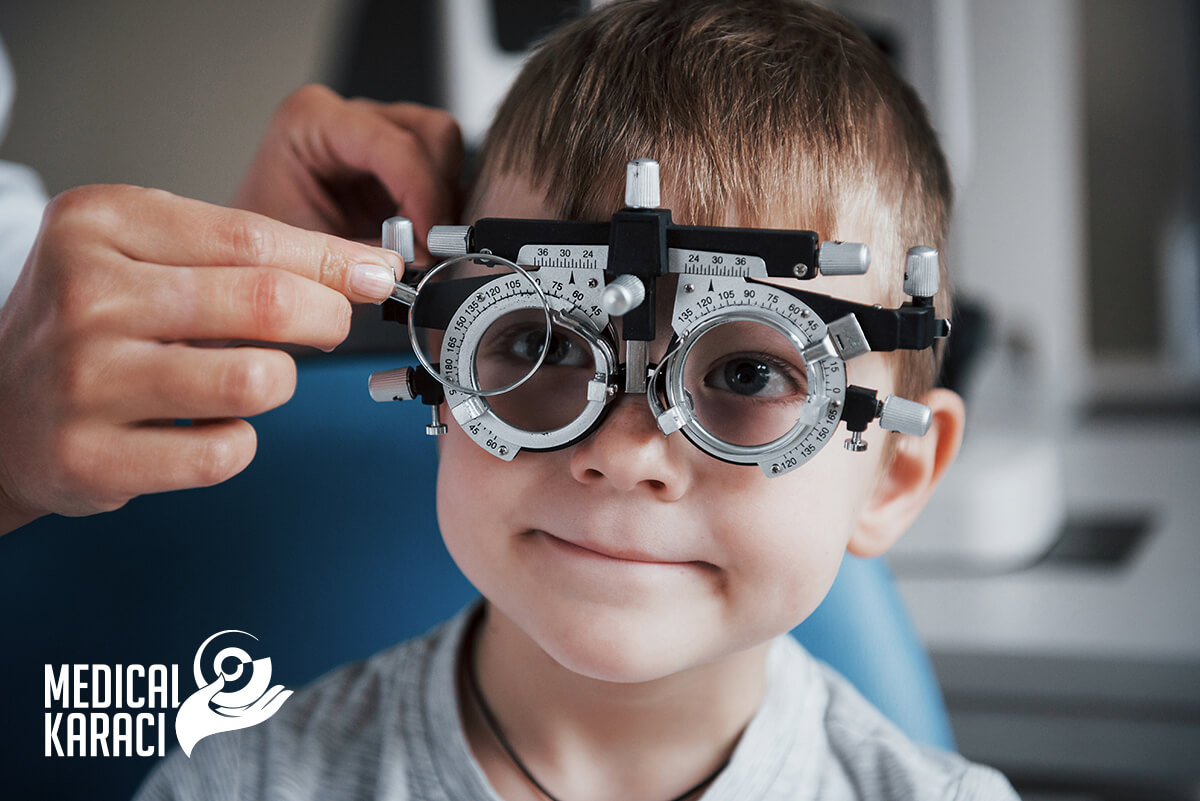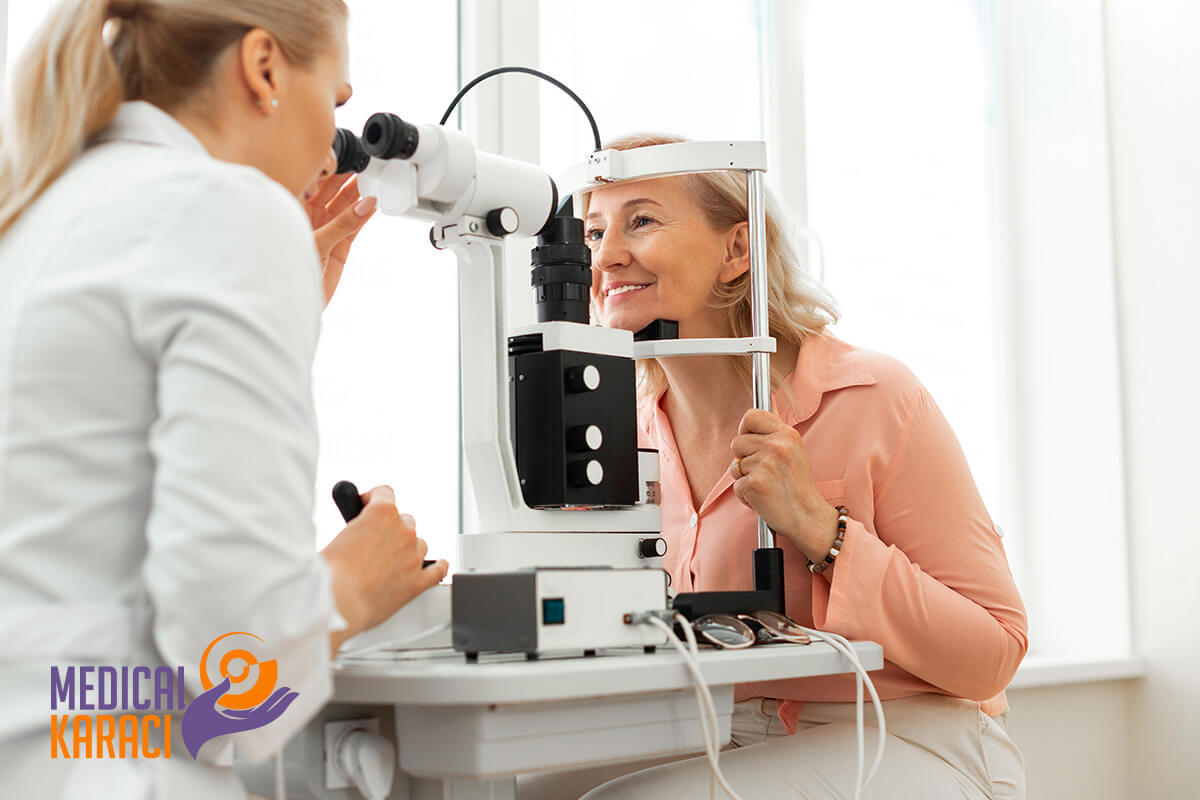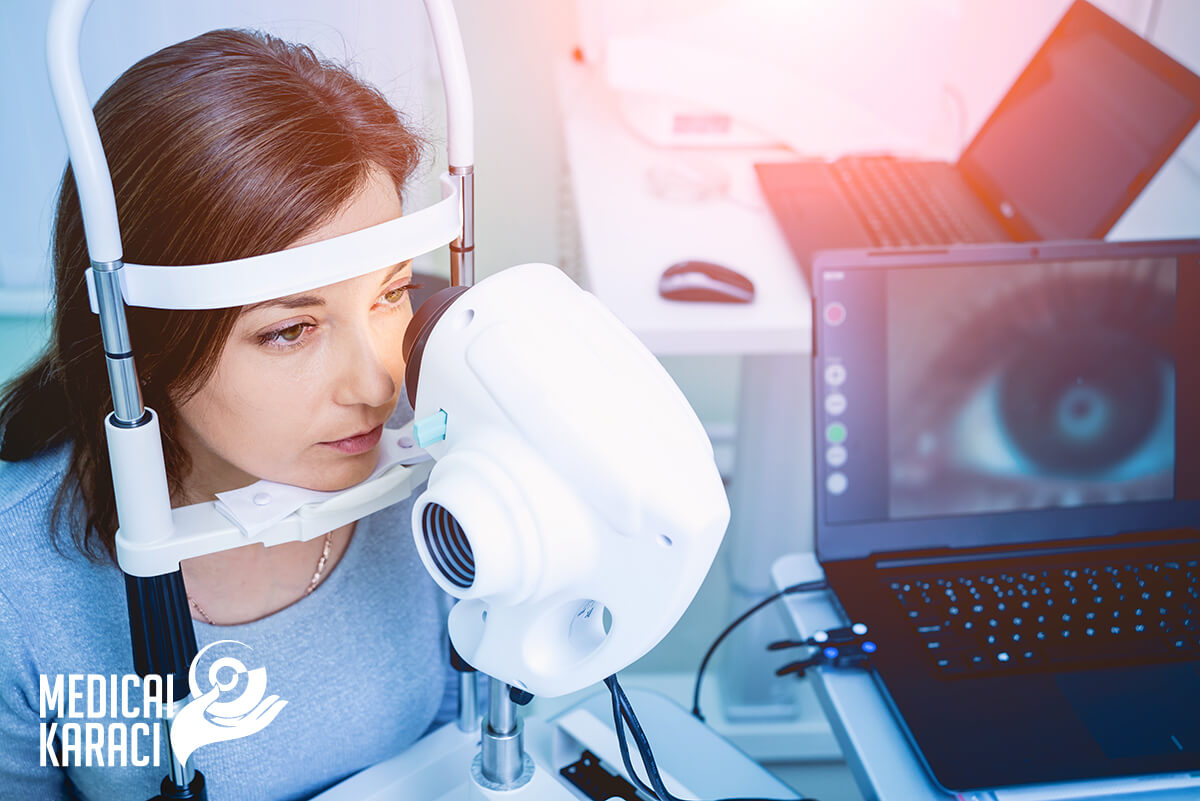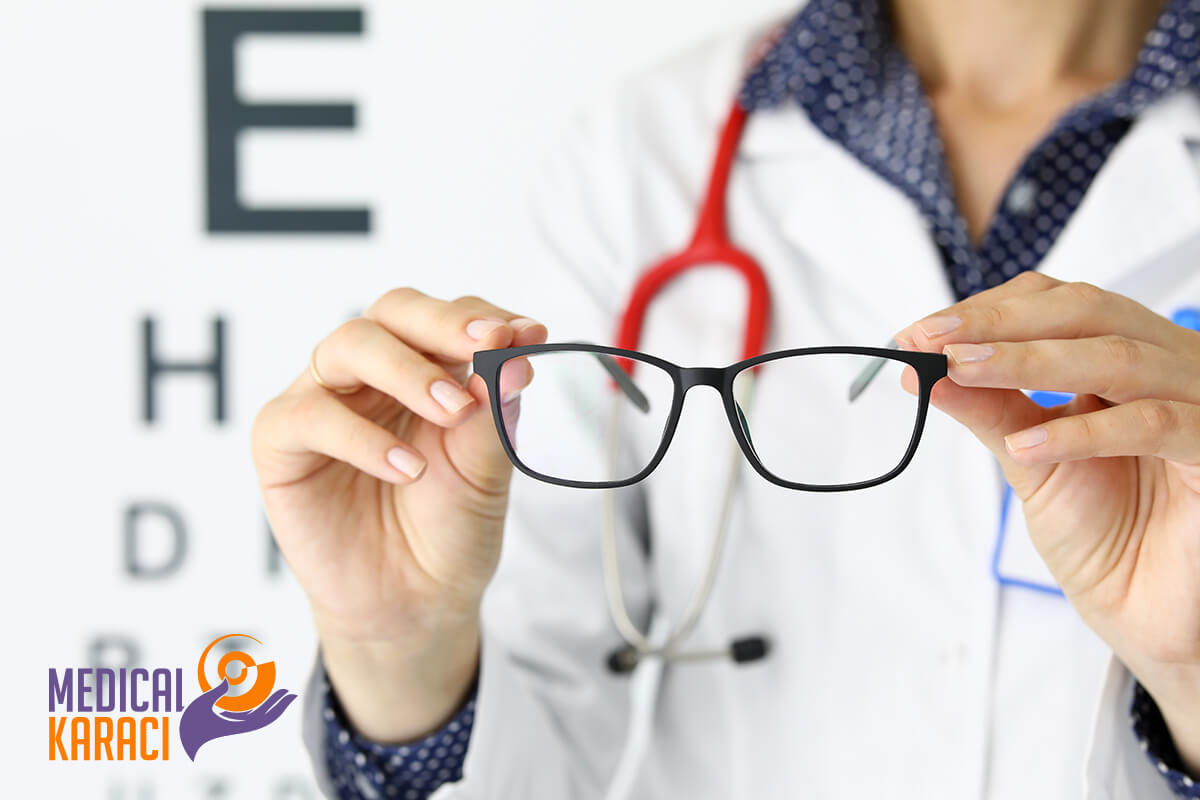Ophthalmology and Ophthalmology Centres
Ophthalmology is the study of medical conditions related to our eyes and vision. Ophthalmologists are doctors who specialize in the medical and surgical treatment of the eyes.
Some ophthalmologists undergo training specializing in one of the many sub-specialties of ophthalmology, such as:
- glaucoma
- uveitis
- refractive surgery
- neuro-ophthalmology
- plastic and reconstructive surgery
- ocular oncology, etc.
What do ophthalmologists do?
Ophthalmologists take care of the diagnosis, prevention and treatment of almost all eye conditions and visual disorders.
In addition, we can also talk about the presence of ophthalmologists with a narrow specialty who treat and monitor certain conditions, such as:
- glaucoma
- diseases of the retina, such as macular degeneration and diabetic retinopathy
- diseases of the cornea
- cataract
- childhood diseases
- cases with a neurological cause or component, such as optic nerve problems, abnormal eye movements, double vision, and some types of vision loss
- cases involving complex surgical procedures such as reconstructive surgery or sight restoration
Procedures that narrow-specialty ophthalmologists typically perform include:
- diagnosis and monitoring of moderate to severe eye conditions
- cataract surgery
- glaucoma surgery
- refractive surgery for vision correction
- cancer treatment
- reconstructive surgery to correct birth trauma or abnormalities, such as crossed eyes
- chronic or severe infections or obstructions of the tear ducts
- removal of a tumour, cyst or foreign body
- monitoring or counselling in cases related to other conditions, such as diabetic retinopathy
- corneal transplantation
Types of eye diseases
Diabetic retinopathy
Diabetic retinopathy is damage to the retina caused by complications of diabetes mellitus.
The condition can lead to blindness if left untreated. Early blindness due to diabetic retinopathy (DR) is usually preventable with routine check-ups and effective monitoring of the underlying diabetes.
There are two types of diabetic retinopathy (DR):
- Non-proliferative diabetic retinopathy (NPDR): This is the milder form of diabetic retinopathy and is usually asymptomatic.
- Proliferative diabetic retinopathy (PDR): PDR is the most advanced stage of diabetic retinopathy and refers to the formation of new, abnormal blood vessels in the retina.
Signs and symptoms of diabetic retinopathy may include:
- blurred vision
- distortion of colour vision
- transparent and colorless spots and dark lines floating in the patient's field of vision
- streaks that block a person's vision
- impaired night vision
- sudden and complete loss of vision
Diabetic retinopathy usually affects both eyes. It is important to make sure that the risk of vision loss is minimized. The only way people with diabetes can prevent DR is to attend every eye exam scheduled by their doctor.
Dry eye
Dry eye disease is one of the most common eye disorders worldwide. Although treatment is available, it does not work for everyone.
In the most severe cases, dry eye disease causes significant eye pain and sensitivity to light and can compromise an individual's overall quality of life.
Dry eyes can happen when tears evaporate too quickly or if the eyes produce too few tears. Dry eye syndrome is common in humans. It can affect one or both eyes and can lead to inflammation.
Dry eye disease creates dry patches on the cornea, which in some cases can lead to scarring.
Medications that can cause dry eyes include:
- some diuretics
- angiotensin-converting enzyme inhibitors (ACE - inhibitors)
- antihistamines
- some sleeping pills
- contraceptives
- some antidepressants
- some anti-acne medications
- morphine and other opiate-based painkillers
Glaucoma
Glaucoma is a group of conditions that cause damage to the optic nerve of the eye - a clustering of more than a million nerve fibers.
Glaucoma is often called the "vision thief" - because it rarely has symptoms. Imperceptibly, it can take up to 40% of a person's vision, and once that vision is gone, it cannot be restored.
While most cases of glaucoma do not exhibit symptoms in the early stages, there are some warning signs to watch out for. Here are what they are:
- Red, swollen or "hard" eyelids
- Wet eyes
- Dry eyes with itching or burning
- Double vision
- Recurrent pain in or around the eyes
- Blinking or flickering due to abnormal light sensitivity
- Dark spots in central vision
- Change in iris colour
A thorough eye examination is considered the best way to detect glaucoma.
Treatment:
The most common treatments for early glaucoma are medications in the form of eye drops or pills, including prostaglandins, beta blockers, and alpha-adrenergic agonists. These work by reducing fluid production in the eye or reducing eye pressure by promoting fluid outflow.
Laser trabeculoplasty is another type of glaucoma treatment.
There are many other types of eye diseases and/or inflammations, including:
- uveitis
- Myopia
- farview
- Astigmatism
- myopia (strabismus)
- conjunctivitis
- and many others
Types of modern methods of vision correction. Modern eye surgery. Innovations in ophthalmology.
Laser eye surgery. Types of laser correction.
Laser vision correction is a proven, long-term method of correcting vision and eliminating dioptric glasses. However, whether every patient is suitable for laser correction is another matter altogether.
There are different types of laser.
Laser-assisted in situ keratomileusis (LASIK)
Some people with astigmatism can be treated with laser eye correction, the most common of which is laser-assisted in situ keratomileusis (LASIK). With LASIK, the doctor makes an incision on the cornea, which creates a kind of flap. Then, a laser is applied to the patient. LASIK causes less pain than other procedures and the patient will recover their vision within a few days.
Other laser options are:
Photorefractive keratectomy (PRK)
Part of the outer protective layer of the cornea is removed. PRK changes the shape of the cornea by removing tissue. The surgeon applies the laser directly to the surface of the cornea to achieve the desired vision correction. PRK is suitable for people with thin corneas or certain other corneal abnormalities. When the cornea heals, it usually has a more even and spherical curve.
Laser epithelial keratomyelusis (LASEK)
The thin layer of cornea is removed by the surgeon and a laser is used to reshape the cornea. The corneal tissue is then replaced. A much thinner layer is affected, making the eye less vulnerable to damage or injury, compared to PRK. This surgery is sometimes preferred if someone has a thin cornea and LASIK cannot be used for them.
Who should avoid laser surgery?
Laser eye surgery may not be appropriate if:
- the person has an immune condition, such as rheumatoid arthritis, lupus or HIV, because it may be harder to recover from surgery.
- the person has another existing eye condition, such as cataracts and glaucoma, as these need to be treated first.
- the person is taking certain medicines
Phakic IOL
Phakic IOLs are implantable lenses that are surgically placed either between the cornea and iris (the colored part of your eye) or directly behind the iris without removing your natural lens. Phakic lenses allow light to focus properly on the retina for clearer vision without corrective glasses.
Implantable lenses function like contact lenses to correct nearsightedness. The difference is that phakics work on the inside instead of sitting on the surface of your eye. Also, Phakic IOLs offer permanent correction of nearsightedness unless they are surgically removed. Unlike contact lenses, you can't feel a phakic intraocular lens in your eye, and aside from regular eye exams, phakic lenses usually don't require any maintenance.
Is every patient suitable for Phakic IOL?
Not all patients are candidates for phakic intraocular lens implantation, just as not all patients are candidates for LASIK.
Cornea transplantation
A corneal transplant is a surgical procedure that involves removing all or part of a damaged cornea and replacing it with healthy corneal tissue from a donor.
The type of corneal transplant in each patient depends on which layer of the cornea is damaged, as well as the extent of the damage. The ultimate goal of a corneal transplant is to improve a person's vision or relieve eye pain. The surgeon may perform corneal surgery to treat severe corneal injuries or corneal dystrophies.
Corneal transplants are outpatient surgery, which means people can go home the same day after their surgery. However, they have to arrange transport to and from the hospital as they cannot drive themselves home after surgery.
Recovery and postoperative period.
After surgery, a person should follow his or her doctor's advice about eye care at home. This includes:
- using eye drops that their doctor prescribes
- avoid rubbing or putting pressure on the eye
- maintenance of the eye
Research and diagnostics
Retinal examinations
Fluorescence angiography
Fluorescence angiography is a common test used to diagnose and monitor the effects of diabetic retinopathy and macular degeneration. Fluorescence angiography is a diagnostic procedure that uses a special camera to take a series of pictures of the retina, the light-sensitive tissue at the back of the eye. The pictures are transmitted to a computer, allowing your doctor to view a series of digital images of the retina.
Diagnostic B-scan
A B-scan is an ultrasound device used to examine the internal structures of the eye. With a B-scan, the specialist can see a cross-section of the eye. It is used when, during a dilated examination, the doctor cannot get a clear view of the retina or other internal structures of the patient due to bleeding, dense cataracts, corneal haze or lesions. It can also be used to locate and track cancerous tumors and other abnormalities.
To perform a B-scan, an anesthetic drop is applied to the surface of the eye. While the patient is placed in the test chair, a probe is placed on the surface of the eye to view the back of the eye. Photographs can be taken using the probe itself.
Similar to the B-Scan machine, the Diagnostic A-Scan. While the B-scan provides a cross-sectional view of the eye, the A-scan provides an overhead view. The Diagnostic A-Scan allows the technician to estimate the size of a lesion in the eye.
Fundus photos:
Fundus photographs were taken through a dilated pupil of the patient's retina using a computer and an attached 35 mm camera. Fundus photography is most commonly used to document the blood vessels and optic nerve over time. By comparing new and old photographs, your eye doctor can estimate the rate at which the disease is progressing. Fundus photography is most commonly used to track macular degeneration, diabetes, and glaucoma.
Nerve fiber analyzer:
The nerve fiber layer analyzer is a computerized camera that provides a graphical and statistical view of the patient's optic nerve. It is often referred to simply as OCT, which stands for optical coherence tomography. In addition to its use in diagnosing glaucoma, the nerve fiber analyzer can also provide clear interpretations of macular holes and macular edema (swelling).
The testing procedure is quite short and painless. After receiving eye drops to dilate the pupil, the patient sits in front of the camera and the camera scans the eye for approximately five minutes.











